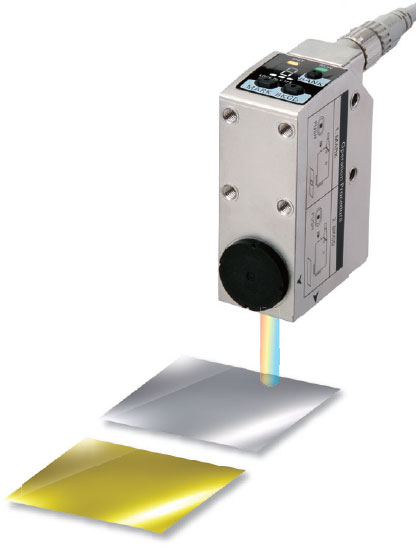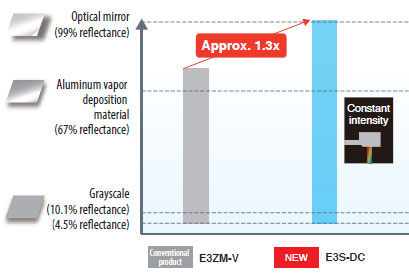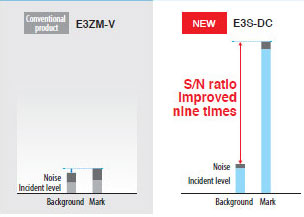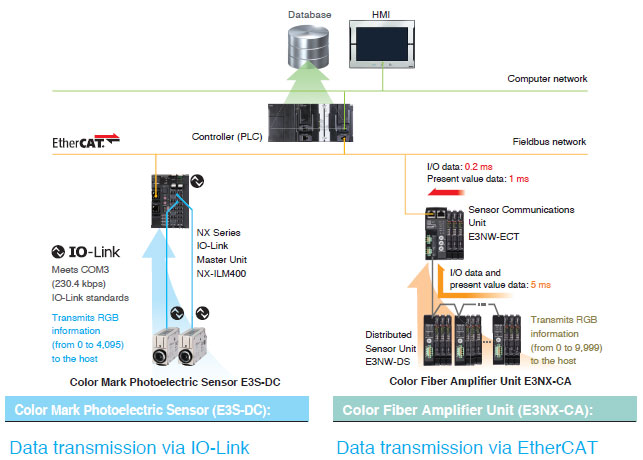This allows for the stable detection of glossy aluminum vapor deposition packaging—simply install the Sensor directly above
E3S-DC
Color Mark Photoelectric Sensor

Color Mark Detection on Any Type of Packaging. Narrow Beam and Large Lens for Stable Detection of Workpieces Tilted at Various Angles.
about this Product Family
- Features
- Lineup
- Specifications
- Dimensions
- Catalog
last update: July 06, 2016
Light Is Received over a Wide Range: Enough Even for Glossy Packaging

No Saturation Even with 99% Reflective Optical Mirrors High Dynamic Range (Wide Incident Light Range)
The incident light range in which no saturation occurs—no adjustment required
The included high luminance RGB three-color LED light emitting element drastically improves the light intensity. Meanwhile, Smart Noise Reduction technology in the Fiber Sensor is applied to reduce the amount of noise, resulting in a high dynamic range where the Sensor is not saturated even when detecting a mirror surface—without having to make any light intensity adjustments.

* Optical mirror and aluminum vapor deposition material measured at the distance with maximum incident level (13 mm); grayscale measured at the distance with minimum incident level (7 mm or 13 mm).
Provides a High S/N Ratio to Detect Subtle Color Differences
Stable detection even of similar colors with only minor differences

Identifies Even Minor Color Differences High S/N Ratio System Design
Three N-Smart Technologies Work Together to Obtain a High S/N Ratio
The high luminance white LED of the Fiber Amplifier Unit, and the high luminance RGB three-color LEDs and high efficiency optical system design of the Photoelectric Sensor deliver high power. "Smart Noise Reduction" (a light reception algorithm) and "N-Core" (a high-speed, high-precision IC) work together to dramatically reduce the effect of noise. Increasing the incident level and decreasing noise make it possible to obtain a high S/N ratio even when color differences are subtle.

Visualization of Variation in Colors Printed on Packaging Makes Troubleshooting Easier
Allowing support of packaging printing color variation, and helping to reduce downtime

Visualization of Color Variation RGB Data Transmission Function
RGB information for color marks and backgrounds for each lot is transmitted to a host and quantified. This information is then managed in a database, making it possible to set optimal thresholds and identify causes quickly if a problem occurs.
During commissioning
Until now, setting the threshold during commissioning required the knowledge of an expert. Now it is possible to get the optimal setting just by registering the RGB ratio of the packaging.
During maintenance
When the Sensor makes false detection, values can be checked to determine whether color variation from lot to lot in packaging material has occurred, making it easy to identify what has caused a problem and to then resolve it.

last update: July 06, 2016


